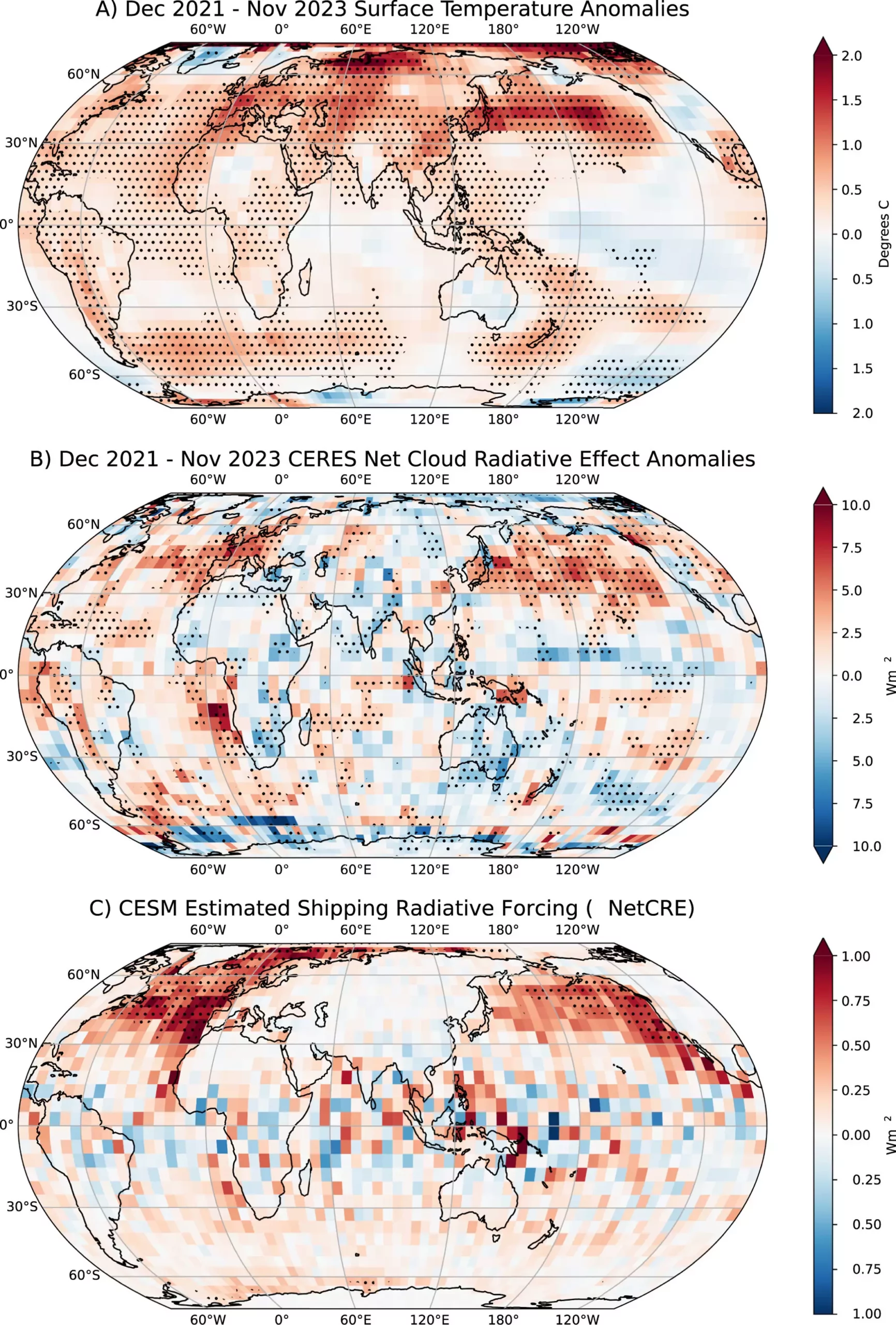The year 2023 has etched its name in history books as one of the hottest years on record, capturing the attention of climate scientists and policymakers alike. An intriguing study by researchers at the Department of Energy’s Pacific Northwest National Laboratory has traced nearly 20% of this record warmth to a significant shift in sulfur emissions within the shipping industry. This finding raises essential questions about the relationship between air quality regulations and global temperature changes, positioning a complex interplay of factors at the heart of climate dynamics.
The adjustments mandated by the International Maritime Organization (IMO) in 2020 heralded a dramatic 80% cut in the sulfur content of fuels used by ships worldwide, aiming primarily at improving air quality, especially around busy ports. While the intent behind this regulation was noble, the subsequent reduction in sulfur aerosols—a byproduct of burning these fuels—has inadvertently played a role in amplifying climatic warming, particularly in the northern hemisphere.
Sulfur emissions not only contribute to the deterioration of air quality but also serve a rather paradoxical role in climate regulation. When sulfur dioxide is released into the atmosphere, it undergoes a series of chemical reactions, leading to the formation of sulfur aerosols. These tiny particles can reflect sunlight back into space, thereby cooling the Earth’s surface by influencing cloud formation—specifically “ship tracks” formed over shipping routes. These ship tracks exhibit a unique property: their brightness can enhance the Earth’s albedo effect, which is instrumental in reflecting solar energy away from the planet.
The researchers employed advanced machine learning techniques to analyze over a million satellite images, yielding data that indicated a significant decline in visible ship tracks, estimated between 25% to 50%. This decline correlated with elevated surface temperatures, indicating a clear relationship between aerosol concentrations and climate warming. The complexity of this relationship, however, cannot be overstated; while air quality improved due to regulatory efforts, the unintended consequence has been a warmer planet.
The Broader Context: Interconnected Climate Variables
The record warmth of 2023 cannot be solely attributed to shipping emissions reductions. According to the researchers, the totality of factors influencing global temperature changes includes oscillating climatic patterns and rising greenhouse gas concentrations. The implications are profound: although reducing sulfur and improving air quality can elicit positive public health outcomes, such actions may inadvertently unlock rapid climate responses that exacerbate warming.
One important takeaway is the transient nature of aerosols compared to greenhouse gases. While aerosols can significantly influence temperatures over short periods and can travel vast distances, they exist in the atmosphere for a much shorter duration. Therefore, there is an inherent risk: a sudden drop in aerosol levels could unearth a surge in warming, as the cooling effect they provide dissipates.
Earth scientist Andrew Gettelman, who spearheaded the research, articulated a critical warning: “Cleaning up air quality faster than limiting greenhouse gas emissions may be accelerating climate change.” The findings suggest that as global efforts to decarbonize intensify, there is an urgent need for a nuanced understanding of how these reductions will influence climate responses. Alone, the reduction in sulfur emissions may not account for all the warming observed; however, the consequence of such emissions disappearing could prompt a rapid change in climatic conditions.
Moreover, the study emphasizes the critical need for comprehensive data and improved modeling to predict future climate dynamics. Better access to ship positioning and emissions data, paired with a deeper understanding of oceanic feedback mechanisms, could illuminate the complex web of interactions that govern our climate.
As we navigate the path toward sustainable practices and effective climate policy, the findings from this research underscore the necessity of a holistic approach. There must be collaborative efforts to combat air pollution while simultaneously addressing greenhouse gas emissions. Understanding the intricate dance between various emissions—both air quality and climate-altering substances—will be paramount for crafting future strategies that safeguard our planet while promoting public health. In this evolving narrative, scientists, policymakers, and the global community must join forces to unravel the complexities that lie ahead in the quest for a stable climate.


Leave a Reply